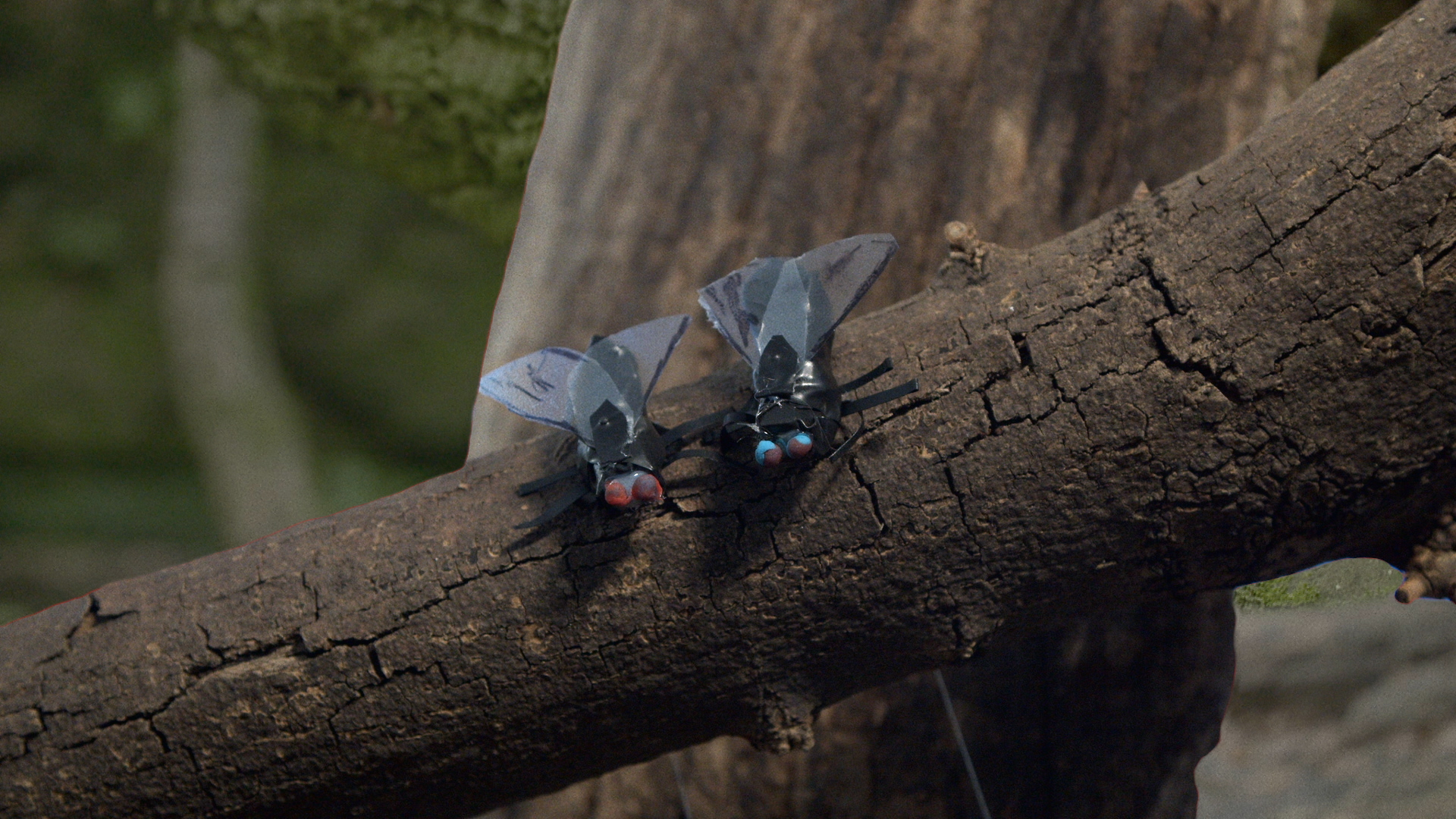This piece imagines a conversation between cicada nymphs as they wait to emerge from the ground in 2038. Video with screen text is accompanied by sound, live vocals and treated guitar. In this presentation, video was played on an LED Volume display.
‘The Lost Ones’ was the result of an FVU Jerwood commission. In the film characters (played by a mixture of actors and non-actors, some of whom have personal experience of the UK’s ‘hostile environment) respond to cruel questioning from a voice off-screen. The voice is coming from a creature that lives inside the walls of the building the characters find themselves in. This project was inspired by direct experience of the UK immigration system, with the creature being based on Gef, a talking mongoose who tormented the occupants of a farmhouse on the Isle of Man. In the world of the film, no one is safe from the attentions of this malevolent creature.
‘Stinkhorn’ was made with Siôn Parkinson, intended to portray the seduction of flies by foul-smelling mushrooms. This film was commissioned by the BBC and LUX Scotland. Watch on BBC iPlayer
This was intended as a live performance but got pushed online during 2020’s first lockdown. Oliver and I started with the idea of a tech billionaire prepping for a climate-apocalypse. An anchorite is someone who chooses to be permanently imprisoned in a cell, usually part of a church, and devotes the rest of their life to prayer. The video is partly a backdrop, partly a score for the sound, played on guitar, synth, voice and tapes. Aspects of the composition draw on the liturgical music intended for an anchorite’s internment.
‘Dreams of Safety’ is a series of short videos, mostly including interviews, that explore themes of safety and how we regard prior periods of safety after they have been disrupted. Begun during the Covid 19 pandemic, the series also touches on other examples including disruption to supply chains when container ship the Evergiven blocked the Suez canal and the implications of climate breakdown. I wanted to make a series that involved talking to others and that could change with time; the series is ongoing and you can subscribe for future episodes on the Youtube channel. Rose Nordin designed the logo and each episode involves other people in some way – thanks to all of them.
‘The Jump Room’ was inspired by a conspiracy theory about an elevator that connects Earth and Mars and is used to train future US presidents. Two screens came to reflect the two sites of the elevator. I was struck by the way proponents of the theory performed when explaining it, and ultimately I contrasted this with young service workers’ performances in cafes. Over a period of years, this resulted in 3 two-channel videos, 3 live performances and a book; this video shows the last version completed for a solo exhibition at The Old Waterworks, Southend. The project was supported by Seoul Museum of Art, Arts Council England, the British Council and the Elephant Trust.
‘Acinema’ was a response to Jean-François Lyotard’s essay of the same title, which proposes that truly radical cinema would either be excessively mobile or excessively still. Through stop frame animation, this film attempts both. Sound was gathered via the onboard mic of the camera capturing the image; in this way sound in the room whilst animating leaks into the film. This was my part of the project ‘Multiplexing’, the outcome of the final LUX Associate Artists Programme, 2013.
‘4.45’ contains found footage taken during earthquakes, leaflets from the 2019 UK general election campaign and a voice reading out various rates that the UK minimum wage has been set at, amongst other things. Earthquake footage got me thinking about how we represent things that are huge and hard to image, like political moments, and how a portion of someone’s life is represented as an hourly wage. This work was completed during the first lockdown in the UK in 2020. Thanks to students of Wimbledon’s Print and Time Based Media course, who can be seen (obscured) standing up and sitting down. This was shot at the time that their degree course was being closed.
‘Exactly what we don’t need right now’ was made within the context of locked down universities in 2020-21, where buildings stood empty and the people working within institutions were forced to improvise, often in difficult circumstances. UK universities have made huge investments in real estate in recent decades, whilst teaching budgets have decreased. In lockdown, these buildings were exactly what we didn’t need. Whilst they stood empty, the organisational and financial structures of institutions seemed to soften and buckle.
The film was made with a cast of volunteers in the Merseyside village of Hale, retelling the story of local legend John Middleton – a giant born there in the 16th century. The story was improvised in interview format; a method borrowed from filmmaker Peter Watkins. Iconography, melody and sound leaked into the film from time spent in and around the village in 2013.
‘ROT’ was an improvised live set with Siôn Parkinson and Dushume (Amit Patel). We played the video score from behind a large semi-opaque plastic projection screen. Instruments included treated guitar, drone synthesisers, voice and hand-made electronics.

